
This resouce contains a lesson plan to use with The Albertosaurus Mystery written by Philip Currie.
- Subject:
- English Language Arts
- Material Type:
- Lesson Plan
- Provider:
- Achieve the Core
- Author:
- Cincinnati District
- Date Added:
- 02/26/2019

This resouce contains a lesson plan to use with The Albertosaurus Mystery written by Philip Currie.

In this lesson, students explore their towns using a variety of print and nonprint resources. By looking at brochures and other informational tools, students learn about some of the purposes for which people read and write. They also practice writing for a specific audience, revising their writing, and working collaboratively to create a brochure for new students just moving into town.
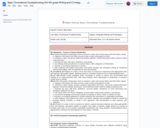
In this lesson, students will research a specific chromebook troubleshooting technique, write a short script, and perform a skit in person or via flip grid to share with the class.

Students will understand and appreciate the work of their bones, muscles, and joints.This educator's guide provides a detailed lesson plan for instruction on the musculoskeletal system. The guide includes questions for discussion, outlines of two classroom activities, a quiz for assessment, and reproducible student handouts. In the first activity, "A Winning Combination," students write a play-by-play commentary describing how the parts of the knee joint work together to kick a soccer ball. In the second activity, "Dr. Build-a-Bone's Laboratory," students read an article about bones (including a cross-section diagram of a bone) to investigate what bones are composed of and how new bone is formed.
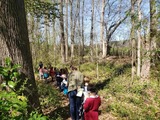
The North Carolina Museum of Natural Science created this resource as part of an online workshop series, but you are welcome to use or modify it for your classroom. It includes a video and written directions for creating nature journals and tips for incorporating them into your classroom. For information on taking any the Nature Neighborhood online workshops for CEUs or EE credit, visit: https://naturalsciences.org/learn/educators/online-workshops.
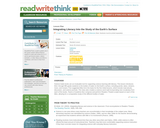
Water covers 71% of the earth?s surface?does it get the instructional time it deserves in your busy curriculum? Students wade right in to the study of bodies of water as they read and discuss science trade books and work together to develop Readers Theater scripts based on selected titles.
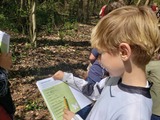
The NC Kids' Exploration Journals are a fun educational tool to help youth explore their communities and natural surroundings! Each journal contains: 18 multidisciplinary activities with guided prompts, 6 lined journal pages for recording observations and reflections, and 4 blank pages for individual creativity.
The digital versions of the journal are designed to be printed out for students either as individual activities or in its entirety so that they can explore their school yard, local park, or own backyard. Though designed for 1st - 5th-graders, older audiences may enjoy them too! They are also available in both English and Spanish languages.
While supplies last, hard copies of the journals are currently available for free to teachers by contacting karen.ipock@ncdcr.gov.
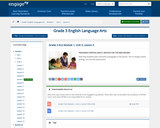
In this lesson from Expeditionary Learning, students will write an informative/explanatory text on Waiting for the Biblioburro by Monica Brown. This is Lesson 5 of 17 from the Grade 3 Curriculum Map Unit 3, Module 1: http://engageny.org/resource/grade-3-ela-module-1-unit-3 .
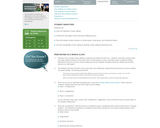
In this lesson, students are introduced to a three-step strategy for peer editing which prepares them to engage in constructive peer editing of classmates’ written work on a regular basis.

This course was created by the Rethink Education Content Development Team. This course is aligned to the NC Standards for 3rd Grade ELA.

This resource accompanies our Rethink 3rd Grade ELA course. It includes ideas for use, ways to support exceptional children, ways to extend learning, digital resources and tools, tips for supporting English Language Learners and students with visual and hearing impairments. There are also ideas for offline learning.

This course was created by the Rethink Education Content Development Team. This course is aligned to the NC Standards for 3rd Grade English Language Arts.
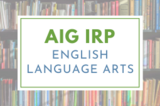
This activity for gifted learners might serve as a culminating activity of part of a larger social studies unit or an English language arts unit centered on the concept of culture. Students will take part in close readings of a variety of fiction (folktales, myths, historical fiction, etc.) and non-fiction (informational books, reference books/materials, maps, magazines articles, original documents, websites, etc.) throughout the unit. As they read, they will pay attention to the different sections of the books (e.g., - nationalities, religions, languages, etc.) and take notes on what applies to them/where they fit in regard to that topic/category, thus comparing & contrasting where they stand when considering their place in America & their place in the world. They will then work to create a “self portrait” by crafting their research into a portrait that conveys who they are in America, in the world, and in their own head & heart and present that information to the class. This lesson was developed by NCDPI as part of the Academically and/or Intellectually Gifted Instructional Resources Project. This lesson plan has been vetted at the state level for standards alignment, AIG focus, and content accuracy.

Students will write instructions on how to make a banana split.
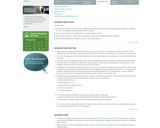
In this lesson, students will use thematically related texts, organized from least to most complex, to gather a word bank of supporting details and content vocabulary about a concept. Then they use these words as a basis for writing acrostic poems, which support organization of information around a central idea, as the lines of an acrostic poem are held together by the topic or main idea spelled vertically.
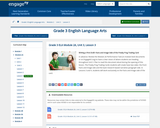
In this lesson, students write important facts about their freaky frog on Freaky Frog Trading Cards.